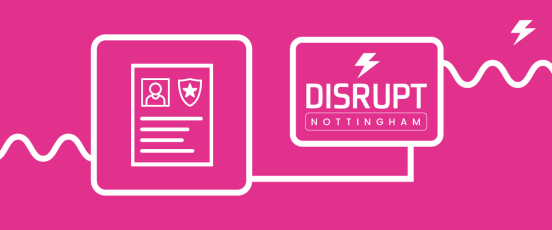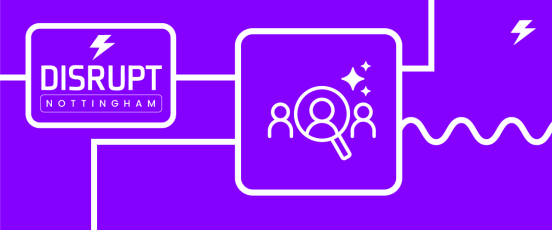Using employee sentiment analysis to boost business performance

Itching to peek inside your employees’ minds? Employee sentiment analysis might just be the best way to uncover what people really think about working for your business. Let’s look at how you can use it to achieve your goals.
Understanding employee sentiment analysis
What is employee sentiment analysis?
Employee sentiment analysis helps you understand how your employees feel about you. While it gives you a good idea of the overall mood within your organisation, it can also reveal attitudes towards specific aspects of the employee experience.
Sentiment analysis involves tracking and analysing what employees are saying about your business, whether it’s on social media, within survey feedback, or somewhere else. The best sources are those where employees talk openly about their experiences.
The origins and evolution of sentiment analysis
Sentiment analysis has its roots in academia and linguistics, and it’s only been applied to business contexts more recently. With the advent of big data and advanced analytics tools, companies can now gather and interpret vast amounts of data in real-time, giving them insights that simply wouldn’t have been possible before.
The difference between employee sentiment and employee engagement
Employee sentiment might just sound like another way of talking about employee engagement, but there are important differences. Employee engagement is all about how enthusiastic and committed employees are.
Employee sentiment is much broader, encompassing the full range of attitudes and emotions someone might feel in relation to their experience with you. While you might already have an idea of how engaged your employees are, sentiment analysis allows you to delve into the specific viewpoints and reasons behind this.
Sentiment analysis also differs from employee experience, which is about the interactions employees have with your business. While experience is objective and observable, sentiment is entirely subjective; two employees might have the same experience but feel very different about it.
Why employee sentiment analysis is vital to your business
Why is employee sentiment analysis important?
If you want to improve employee experience and benefit from better engagement, sentiment analysis is the first step. Not all employees will volunteer their opinions. And while you can get a sense of how people feel from reading survey feedback, holding focus groups, and encouraging openness in one-to-one check-ins, you need reliable data that backs up your hunches before you can take decisive action.
When you’ve got evidence of how people feel and why, you can use it to create a more positive work environment that boosts the bottom line. Even the simple act of inviting employees to offer feedback can itself improve morale by showing you’re willing to listen.
How employee sentiment affects business performance
Your business is only as strong as its people, and satisfied and engaged employees are the key to success. Sentiment analysis gives you the data you need to improve employees’ experiences, which then leads to things like better productivity, performance, and retention.
Productivity: Employees who respect your business and want it to do well are likely to work harder to help you achieve that. At the same time, poor mental wellbeing in the workplace can slow down the pace of work, so addressing this is a win-win.
Performance: People do their best work when they’re feeling positive and motivated. This is true of any type of activity, whether it’s coming up with ground-breaking product ideas or providing great customer service that leads to more loyal customers.
Retention: Disengaged employees not only contribute less to your business – they’re also more likely to leave it for good. This then results in higher recruitment and training costs as well as dwindling morale. Sentiment analysis can uncover specific reasons why people are leaving and hint at what you can do to fix it.
Technologies and techniques for employee sentiment analysis?
Traditional methods such as surveys still play a role in sentiment analysis. But many companies are now turning to tools powered by artificial intelligence (AI) and natural language processing (NLP) to analyse this feedback and combine it with data from harder-to-reach sources.
Sentiment analysis is sometimes paired with social listening tools and even email and chat monitoring software to build a detailed picture of employees’ attitudes. After all, people are often more honest when they don’t think their employer is listening than they are in employee surveys.
The role of artificial intelligence and natural language processing
AI-powered tools use NLP to interpret human language and gauge the emotional tone of written text. They quickly sift through vast amounts of data, such as emails, social media posts, and employee survey feedback, to identify patterns. The latest technologies can instantly collect and analyse data that would take your HR team many hours or days to trawl through manually.
You might worry about AI’s ability to fully understand human emotion and put it into context, but being a robot may actually be an advantage here. While as a human, you’re likely to interpret others’ emotions based on your personal opinion and experiences, AI follows a strict set of criteria and has been trained to understand sentiment based on an enormous range of examples. Because of this, it’s likely to rate sentiment more consistently than a team of people.
How sentiment analysis software works
Sentiment analysis software first collects data from whichever sources and communication channels are available. It then removes irrelevant information before analysing the data using AI and NLP algorithms.
These algorithms sort text into different categories of sentiment, such as positive, negative or neutral, based on the words and phrases used as well as the overall context. Finally, the software presents the results visually to give you insights into employee sentiment across different departments, activities, or time periods.
Choosing sentiment analysis software
The choice can be overwhelming when it comes to HR software, especially when it involves new-fangled technologies you haven’t tried out before.
The important thing is that the software does what you need it to. Look for tools that support the data sources that are relevant to you, whether that’s surveys, emails, social media, or something else. There’s no point in using software that specialises in emails if you have no intention of monitoring this form of communication.
You should also make sure it can report on the things that matter most to you and present data in a way your stakeholders will find valuable. Ask for a demo so that there are no surprises after you’ve invested in your new software.
Putting employee sentiment analysis into practice
Employee sentiment analysis doesn’t just give you a general sense of how people feel. You can also use it to gather feedback on specific activities and gain insights into what would improve sentiment in these areas.
For example, you might want to know whether a particular HR policy is working, see how useful employees are finding a new training programme, or assess how well leaders are engaging their teams.
At the same time, it’s a good idea to be open to insights you weren’t looking for. You might just discover a major factor in employee engagement you’d never have thought of.
Here are some things to think about when planning and implementing employee sentiment analysis:
Define your goals: What do you want to know, how will you measure it, and what will you do with the results?
Choose the right tools: Ensure your software is relevant to your goals and within your budget.
Communicate with employees: It’s best to be open about why and how you’re measuring employee sentiment, and what you’ll do with the results. This might even encourage employees to be more forthcoming with feedback in the future.
Gather and analyse: Keep your reporting focused on what you want to know to avoid getting lost in a sea of data you’re not sure what to do with.
Put your findings into action: Use the insights you’ve gained to come up with achievable strategies for improvement. Make sure key stakeholders are willing to support these so that they’re successful.
Monitor the results: Regularly review the success of your initiatives and continue gathering sentiment data to assess whether they’re working. Be willing to adapt or drop any strategies that aren’t effective. At the same time, keep track of your return on investment by measuring key performance indicators like productivity, employee turnover rates, and customer satisfaction scores.
Ready to explore your options? Our People First HR software offers employee sentiment analysis along with plenty of other features that save you time and help you achieve more.



